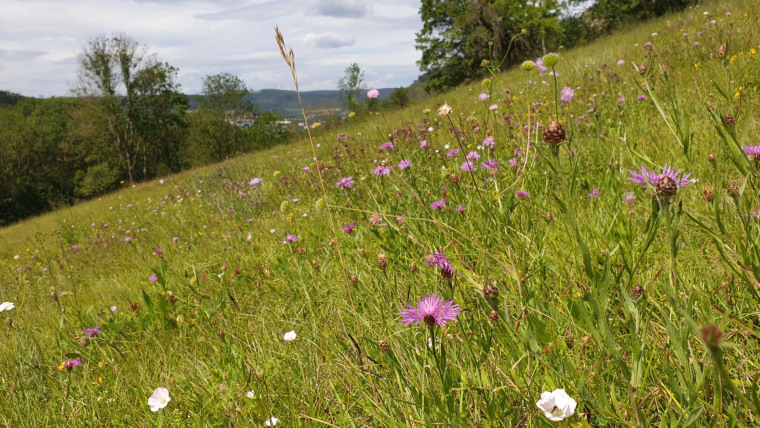
- Life
Published: | By: Ute Schönfelder
Source article
Botanical gardens are found all over the world and are home to plants from all over the world. They are therefore ideal study platforms for researchers to find out how different plants react to changes – for example as a result of climate change. Numerous scientific studies are now being carried out in cooperation with botanical gardens, including the "PhenObs" project of the German Centre for Integrative Biodiversity Research Halle-Jena-Leipzig (iDiv)External link. In a recent study, a team from the University of Jena has now been able to show that the adaptability of species observed in botanical gardens also allows conclusions to be drawn about natural environments. The researchers led by Prof. Dr Christine Römermann from the Institute of Ecology and Evolution report this in the journal "Ecology and Evolution".
"Until now, we didn't know much about how the special environmental conditions in a botanical garden affect the growth of plants and how they influence the life cycle of plants," says Till Deilmann, a doctoral student in Römermann's team and first author of the publication. It was therefore difficult to transfer findings from studies in botanical gardens to natural environments.
For their current study, the researchers selected a total of 16 plant species that grow both in the University of Jena's Botanical Garden de and in natural habitats in the Jena area, including yarrow (Achillea millefolium), brown knapweed (Centaurea jacea) and ribwort plantain (Plantago lanceolata). Over a period of one year, they investigated how these plant species differ in terms of their life cycle, such as the start of flowering or the death of the population, and their functional characteristics, such as leaf size or growth height, in the natural habitats and the Botanical Garden. The natural habitats were semi-arid grasslands on the Jenzig and in the Pennickental valley as well as mown meadows along the Saale river.
Similar start of flowering – different flower size
"Our results show that the functional characteristics showed greater differences between the habitats than the life cycle characteristics," summarizes Till Deilmann. Specifically, this means that the time at which plants begin to flower, for example, differs only marginally between habitats, while characteristics such as flower size vary significantly more. For example, the plants in the Botanical Garden had the largest flowers – the flower size was smallest in the semi-arid grasslands. The populations on the mown meadows differed in the timing of flowering, while the populations on the semi-arid grasslands tended to flower at the same time.
Statistical analyses also showed that reproductive characteristics, such as flower size, strongly influence the time of flowering and that these relationships differ in the various habitats. "Plants with a medium flower size tend to flower earlier and for longer on semi-arid grasslands," says Deilmann. On mown meadows, on the other hand, where plants compete strongly for light, flower size plays less of a role than plant height. "The habitat is therefore an important factor." The researchers conclude that it is therefore important to observe the respective natural habitat of the species in studies carried out in botanical gardens. This is the only way to categorize the results and then transfer them to nature.
Original publication:
Deilmann TJ et al. Habitat conditions filter stronger for functional traits than for phenology in herbaceous species, Ecology and Evolution (2024), https://doi.org/10.1002/ece3.11505External link
